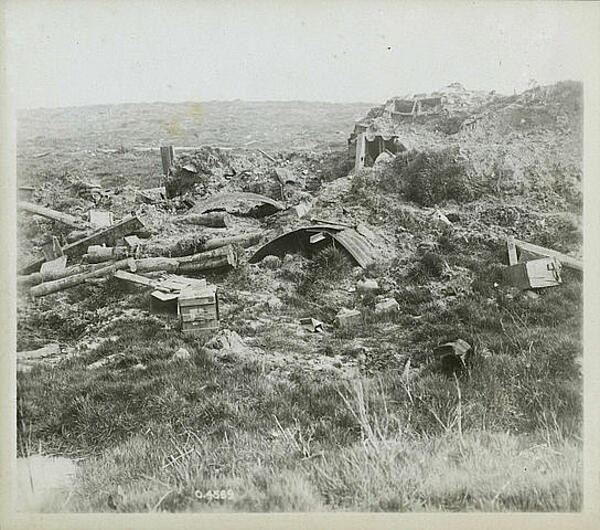The Battle of Mount Sorrel
The Battle of Mount Sorrel was fought as part of a series of battles that took place southeast of Ypres in June 1916 as the Germans attempted to gain higher ground - a significant strategic advantage - around Ypres.
Along with Hill 60 and Hill 62, Mount Sorrel was attacked by the Germans as it was just a short distance from Ypres - only 2 miles away - and provided a 30 metre height increase when targeting the town with artillery fire. While only small, this was enough to make a huge difference to the accuracy of their aim.

On 2nd June 1916, the Germans launched an enormous artillery attack on the Canadian positions in the Ypres Salient - the Canadians were already in the process of planning to consolidate their positions so they were at least part-way prepared for an all out attack on the enemy. Despite this, casualties in the front lines were as high as 90 per cent due to the accuracy go the German artillery, killing even senior officers.
At 13:00, the Germans exploded a number of mines that they had dug below Canadian lines, which was followed by an attack from the German infantry, who managed to advance more than 1,000 metres. The Germans had a strong advantage and soon they had managed to capture Mount Sorrel and Hill 61.
On 3rd June, the Canadians launched a counter-attack. Although it was mean to have begun at 02:00, the difficulty the Canadians had bringing reserves to the front lines meant it was delayed by five hours. A breakdown in communication also meant that only some of the Canadian units launched their attacks on time. As a result, they suffering heavy casualties and failed to recapture the area. However, they did advance 900 metres.
Allied commander Herbert Plumer was incensed by the German’s hold over Mount Sorrel, which provided them with easy access to the Allied stronghold of Ypres. However, the preparations for the Somme offensive meant that he could not release any troops. Instead, Plumer was forced to use infantry resources that he already had in the are, including the 20th Light Division and additional artillery.
The new artillery managed to hinder the German’s advance, but the enemy soon detonated four mines under Canadian positions, resulting in many Canadian casualties. The 2nd British Cavalry Brigade was moved to the front line to help support those already battling the unexpectedly strong German troops.
On 13th June, the British and Canadians finally launched a strong counter-attack. Aided by a smokescreen - and four previous days of artillery bombardment - they managed to make it to the German front lines with ease. While it was common procedure for an artillery barrage to be followed by an infantry advance, the Germans seemed unprepared and within only one hour of the attack starting they were forced to pull back to their original positions.
The Germans launched two unsuccessful counter-attacks that brought them within 150 metres of the Canadians, but they failed to regain Mount Sorrel until the German Spring Offensive of 1918.
MLA Citation/Reference
"The Battle of Mount Sorrel". HistoryLearning.com. 2025. Web.
